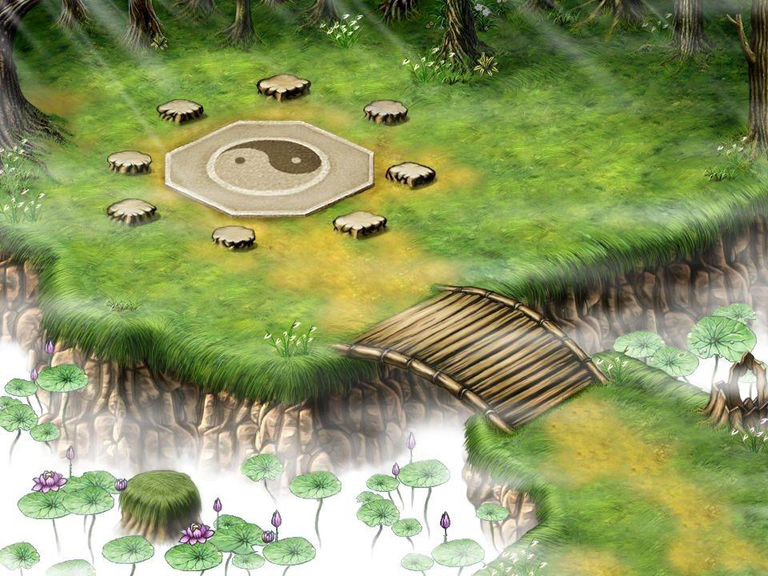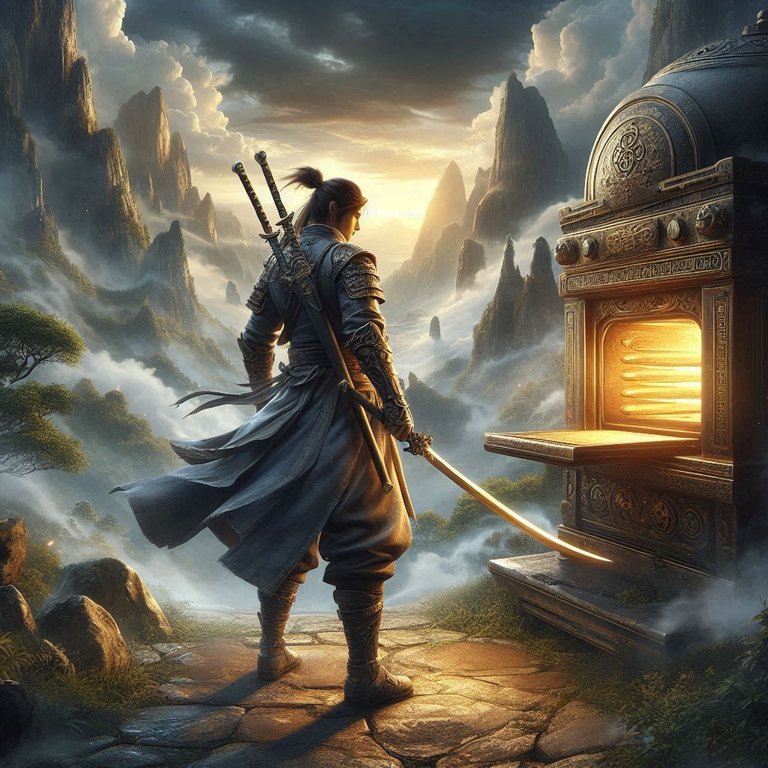Introduction: Monster and Me
Many years ago I played briefly Monsters & Me 2, a 2D MMORPG featuring themes of Chinese myth and culture. Apparently the original was quite popular, so the studio decided to develop a sequel.
The original game was released in 2005 and had a lot of similarities with Final Fantasy VII gameplay and the Pokemón pet catching, training and evolving game loops. You can read a short review here. Another interesting short read is this Reddit post of someone reminiscing about what the game was about and how much they enjoyed it.
Unfortunately things didn't go well for the sequel and shortly after I started playing the game was discontinued and the servers shutdown. I believe the original lasted a while longer, but was ultimately discontinued in 2012.

However, the original game was so beloved that a community of players decided to recreate it as Monster and Me: Reborn. They have been maintaining and slowly developing, and to this day there is still an active server. You can check the website and there is also a Discord group where I lurk sometimes, but I'm never actually tried this community version.
The purpose of this blog post is to describe the features I liked the most and see if they catch the eye of the Holozing developers 😀
Monster and Me key elements
The main gameplay loop was similar to FF - your character would walk around a world of linked 2D maps and occasionally get dragged into a turn based fight with the monsters associated with that particular area.
There was a game mechanic that would allow the player to capture and tame one of the monsters during the fights. Once captured they would become pets that could be used to fight alongside you in the ensuing fights.
One of the primary objectives was to develop powerful pets capable of battling in the more challenging areas of the game. But training pets was a slow and meticulous process, which extended gameplay and added longevity.
Monsters had base stats but also a growth rate stat that determined how much stronger they got with each level. The growth rate was a critical factor, as it would determine if the monsters would grow to become strong enough to win battles in the hardest maps, once they reached the map level.
Monsters trained from the lowest levels had the best growth rate because the growth rate would also increase slowly with each level. A monster caught at a high level would have a standard growth rate below what could be attained by training with the player. This means of course that an optimized training strategy would take longer.
Training by gaining experience in fights had to be carefully adjusted to maximize experience gain while at the same time making sure the pets wouldn't die. If one of your pets died during a fight, they would not only lose levels but also get a penalty in the growth rate, which is the last thing you'd want to happen. You'd need to move your pets around so they fight the strongest opponents possible, but without risking death.
There was also a safe AFK training arena, but this was slower and yielded a much lower growth rate increase than training through fights. But if I remember correctly this was still useful in some cases, like when leveling pets to use in the Wuxing oven, as I explain next.
The Wuxing oven
Functionally very similar to Diablo 2's Horadric Cube, it would allow the M&M player to combine items and produce new weapons and all sorts of useful items, following certain recipes.
I don't remember for sure anymore, but I believe the Wuxing oven was also used to combine pets into a new +1 Generation pet. Pets evolved this way with a higher generation number would start from level 1, but each time they evolved their base growth rate would increase substantially. So one of the game loops would be to prepare enough pets with high enough level and decent growth rate to evolve into a higher generation pet with an increased growth potential.
There were of course rare monsters with better base stats. And some less powerful monsters were also desirable because they were key ingredients for powerful evolutions and recipes. Which brings me to the next topic, the recipes themselves.
I will just briefly rehash something I recently explained here. There are four interesting ideas for me regarding crafting.
Hidden recipes that must be discovered by the players through trial and error and perhaps game clues.
Unique recipes per account, based on an account seed. To obtain the same item, different players would use different recipes, determined randomly by their unique seed. The recipes could also follow a certain pattern with variability within groups of components. This would bring several benefits:
Once someone discovers a recipe, it doesn't mean everyone else would be able to flood the market with that item, made the exact same way. If you want to be able to create and sell a desirable item for profit, you have to invest time and resources to discover your own recipe. It helps create a healthier market with better profit margins.
It brings the recipe discovery game mechanic to everyone, not just the few that try finding recipes until they are found and then the incentive stops.
Creates conditions for buying pressure for a larger variety of game items, not only during discovery efforts but then also for repeated crafting, as even somewhat common craftables would have different requirements for different players.
A crafting proficiency system with levels. A player with a lot of crafting experience would naturally be better at it. This means that in a stat range situation like Diablo or Path of Exile, a player with a lot of crafting experience would be able to produce better items and demand a higher price for them.
The name of the crafter goes into the item being crafted, alongside stats and the rest of the item information. Items created through the Wuxing oven had this feature. It adds another layer of appeal to the crafting process, where your items could live on in the hands of other people and they will know who created them. A player could become the stuff of legends even after they stop playing if they create top tier items that continue to be valuable to others for a long time. Of course power creep could erode this, but I still think it's appealing to become renowned among your fellow players for your ability to craft exceptional items. There could also be an in-game messaging system, where upon inspecting an item in the market or in another player's inventory, a prospective buyer could contact the crafter and place an order for another, discuss the crafting process, supply the ingredients, etc.

The rewards earned on this comment will go directly to the people( @agrante ) sharing the post on Reddit as long as they are registered with @poshtoken. Sign up at https://hiveposh.com. Otherwise, rewards go to the author of the blog post.
The concepts you’re bringing up from Monsters and Me really hit home for me as someone who studied game design in college. After moving to California post-graduation, I tried to break into the industry but unfortunately couldn’t. I work in IT now, but my passion for gaming and understanding the mechanics behind these systems hasn’t faded at all. It’s fascinating to see how developers create such intricate loops, and your post brought back that feeling of analyzing how and why these systems work.
I’m particularly drawn to the way Monsters and Me managed progression with the growth rate mechanic for pets. That whole process of catching low-level monsters to maximize their potential growth feels like a masterstroke of layered strategy—balancing risk and reward, grinding in the right zones, and working towards perfecting your party. It’s those types of systems that really appeal to the core of RPGs for me, creating a sense of personal investment and progression that resonates long after you stop playing.
The idea of using a Wuxing oven to evolve pets and craft new items is so similar to what I loved in games like Diablo 2’s Horadric Cube or later iterations in Path of Exile’s crafting systems. These mechanics allow for flexibility in how players approach their progress—some focusing on the immediate game, while others look at the long-term gains. It opens up multiple layers of gameplay that appeal to different types of players, and that’s where the brilliance of crafting systems like this comes in.
Your points about hidden and unique recipes per account also have a lot of potential in making crafting more dynamic. A system where players have different recipes based on account seeds would create a continuous sense of discovery and rarity. Instead of saturating the market with everyone creating the same powerful items, it incentivizes the ongoing pursuit of new formulas and increases the demand for a variety of items.
This post reminded me of why I fell in love with game design in the first place—the blend of strategy, progression, and player agency. Monsters and Me may not have made it far, but these ideas could still be applied today in modern games, potentially leading to fresh, innovative mechanics. It’s also why I’m still excited about seeing projects like Holozing push forward—because, even though I’m not working in the field directly, I can still appreciate the art and mechanics from the perspective of a fan and an IT guy who never stopped loving game design.
First, thanks for such a detailed comment. It's nice to see that what drove me to write this blog post resonates with other people as well.
My background is life sciences. I never had any formal training in computers or game design. Looking at game concepts and feeling like they make sense or are effective just comes instinctively to me. It jogs my creative neurons 😄
Reading about "studied game design in college" makes me feel like looking for online courses. I'm sure I'll learn a ton and enjoy it at the same time!
I often find myself coming up with interesting ideas for games I would like to play. I'm not in a position to make those ideas come to life, so my plan is to eventually write about them. Perhaps they will inspire other people. That would be cool.
I added a fourth point to the crafting ideas. I can't believe I forgot about this while I was writing initially, it caused a really big impression on me back then. I don't think I ever saw this feature on another game since.